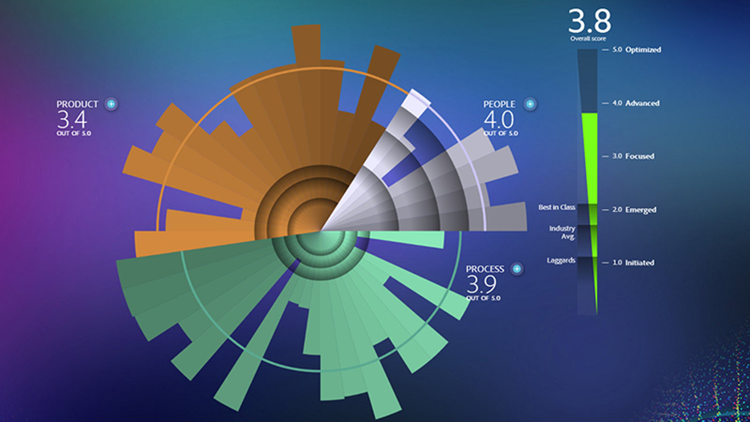What’s Your Score? Assessing Your Digital Marketing Maturity

When it comes to engaging customers with digital marketing, how would you rate the “maturity” of your business today? Goofy, awkward teenager with his voice changing? Toddler learning to walk across a room? Or confident, learned professional admired by industry peers? What I’m referring to is how deeply your organization is invested and taking advantage of fully integrated, strategic, and data-based deployment of digital marketing—from the tools you employ to how knowledgeable your team is in executing successful campaigns. Today’s marketer must move the enterprise to a point where resources are aligned and optimized to achieve maximum results from digital marketing practices. Is your enterprise mature? Are you where you want to be?
Adobe is gearing up for our highly anticipated 2014 Summit in March by introducing a landmark model of the digital marketing maturity (investment) of our audience.
We have built a digital marketing maturity model, developed in part by an analysis of existing data provided by customers, partners, prospects, and vendors. As a lead-up to our annual Summit conference, Adobe is launching the Digital Marketing Maturity Assessment as a means for you to determine your enterprise maturity.
Today’s post introduces this assessment as part one of a four-part series addressing the three business pillars, or primary dimensions, upon which your digital marketing maturity score is calculated:
- People
- Process
- Tools (Technology)
The assessment allows marketing directors and decision makers to identify their companies’ strengths and reveals focus areas to develop. The questions within the assessment require the respondent to consider those three pillars within the framework of seven key subdimensions:
- Channels – the media, properties, and touch points where customers interact with your brand
- Audiences – the activities to define and target specific customer segments
- Context – the circumstances and events that would comprise a customer’s master marketing profile
- Content – the asset management, creative workflows, and tools needed to publish and optimize digital experiences
- Assets – the creation and management of digital assets published and used for marketing messages
- Campaigns – the activities and operations to manage the messaging of brand and marketing portfolios and measure performance
- Data – the data collection, definition and reporting of key metrics, performance indicators, and goals
Scoring is categorized along a continuum on a scale of 0 to 5 that begins with Initiated and then rises through Emerged, Focused, Advanced, and Optimized. Respondents are able to assign goals that compare their company to digital marketing laggards, industry average, and best in class. The assessment also provides benchmark comparisons with other enterprises according to industry, size, and market geography.
The Digital Marketing Maturity Assessment doesn’t require a significant amount of time to complete. Plan to spend 20 to 30 minutes on the assessment, and we will send a full report upon request once it’s completed. Follow along with this blog series to learn more about how each dimension fits within the pillars of people, process, and products.
I’m looking forward to sharing our innovative model with you at Adobe Summit, March 24–28, in Salt Lake City, Utah. Register today to reserve your spot!